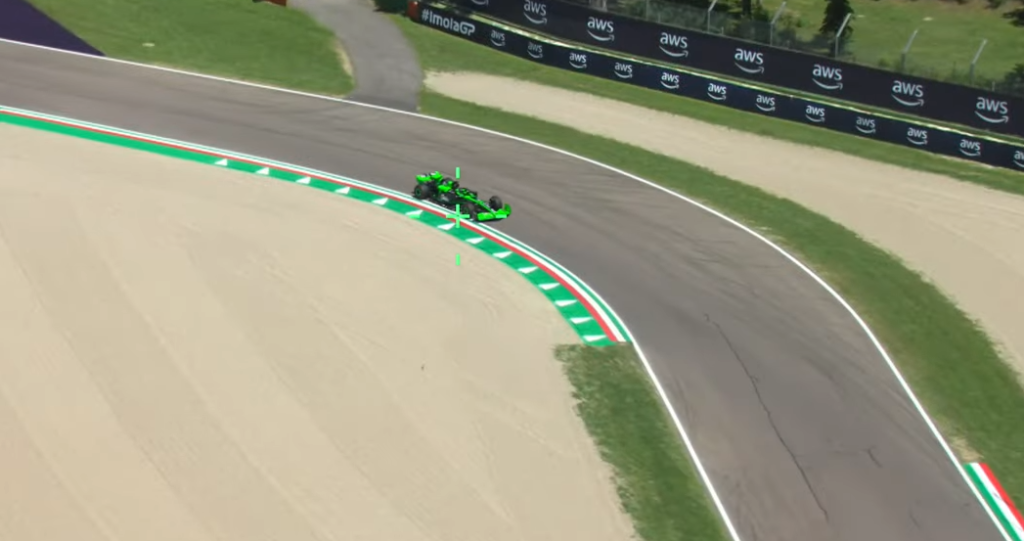
The Apex Reimagined: Racing Science, AI Strategy, and the Future of Cornering
In the world of Formula 1 and competitive sim racing, the apex has long been the invisible key to speed—a razor-thin moment where physics, reflex, and intention align. Traditionally, it was a fixed point, the innermost mark of a corner. Today? It’s something else entirely.
The apex is no longer a point—it’s a probability. A dynamic decision, not a geometric default.
With the rise of AI-assisted telemetry, quantum simulations, and biomechanical feedback systems, modern drivers—both real and virtual—are entering turns armed not just with instinct, but with data.
Let’s dive into the future of racing’s most important point on the track—the apex.
The Core of the Corner: What Is an Apex?
Traditionally, the apex is defined as the point within a corner where the car is closest to the inside edge of the track. Hitting it correctly balances the forces of momentum, grip, and cornering radius.
But in both real-world motorsport and sim racing platforms like iRacing and F1 23, that apex is not static. Instead, it’s adjusted lap-by-lap depending on:
- Tire temperature
- Grip evolution
- Fuel load
- Brake bias
- Weather variability
F1 Chronicle and Life at Lean confirm that apex consistency directly influences corner exit velocity, steering correction, and tire preservation.
For aspiring drivers, learning how to improve lap times in sim racing begins with recognizing this dynamic nature of apexing—not just “hitting a line” but adapting to constantly evolving input data.
Apex Types: Tactical, Not Just Technical
| Apex Type | Description | Best Use Case |
|---|---|---|
| Early Apex | Turns in early; boosts mid-corner speed but risks poor exit | Defensive positioning, holding off challengers |
| Geometric Apex | Mathematically ideal; smoothest arc through the turn | Qualifying laps, stable grip conditions |
| Late Apex | Turns in late; straighter exit, better throttle zone | High-degradation circuits, overtaking setup |
Example: Max Verstappen prefers late apexing at Silverstone’s Copse to set up straighter exits. Lewis Hamilton often uses geometric lines to preserve tire life over a full race stint.
If you’re setting up your rig to practice these apex types, start with the best sim racing setup options to ensure precision control and real-time feedback.
Apex as a Strategic Decision Node
Each apex choice can be framed as a behavioral model, based on racing intent:
| Driver Intent | Apex Choice | Why |
|---|---|---|
| Overtake Setup | Early or Late Apex | Shortens braking zone or straightens exit |
| Defense Mode | Early Apex | Blocks inside line on exit |
| Tire Management | Late Apex | Reduces scrub and side-load |
| Undercut Strategy | Geometric Apex | Ensures pace while minimizing tire strain |
Every apex is a mental model. Are you attacking? Defending? Managing degradation? Each choice feeds into broader race strategy—and your telemetry should reflect that.
Lap-Time Leverage: Micro-Gains, Macro-Wins
Every missed apex creates micro-corrections—tiny steering adjustments that result in:
- Extra tire heat
- Poor throttle modulation
- Lower top speed on exits
Top sim racers and F1 engineers know: apex discipline reduces fuel consumption, steering fatigue, and lap-time volatility.
McLaren Applied Technologies emphasizes that fine-tuned braking and corner entry precision are directly linked to apex optimization through AI-integrated telemetry.
Dynamic Apexing Under Race Conditions
| Condition | Apex Shift | Tactical Reason |
|---|---|---|
| Wet Track | Wider Apex | Avoids polished rubber line; finds new grip |
| Worn Tires | Late Apex | Reduces understeer; preserves cornering edge |
| Low Fuel Load | Early Apex | Exploits reduced mass; shorter turning arc |
Pro racers adapt their apexing based on tire delta, weather evolution, and surface feedback—not just memory. Want to feel that shift in real time? Start with a direct drive wheel for ultra-accurate input sensing.
Precision Methods: Trail Braking, Eye-Tracking, Haptics
1. Trail Braking
F1 drivers like Hamilton progressively release brake pressure into the turn. This rotates the car smoothly and keeps the center of gravity neutral.
2. Eye-Tracking Awareness
In simulators equipped with Tobii or other eye-tracking sensors, pros learn to “look through” the apex, not at it—training anticipatory focus.
3. Haptic Feedback & Muscle Memory
With haptic gloves and button boxes, racers “feel” tire slip before it happens—leading to instinctive line correction and quicker responses.
McLaren’s human performance team studies how micro-fatigue in forearms influences braking behavior after 30+ laps.
Apexing with Algorithms: AI + Real-Time Telemetry
Modern F1 teams use AWS-based AI models to analyze live inputs—such as tire degradation, fuel decay, and ERS discharge—to recalculate ideal apex points per lap.
| Variable | Affects… |
|---|---|
| Tire Surface Temp | Mid-corner grip, braking zones |
| Fuel Load | Car mass, turn-in velocity |
| Track Evolution | Rubber buildup, corner entry |
| Brake Bias Adjustment | Rotation balance at turn-in |
Mercedes F1 confirmed using real-time neural networks to adjust racing lines during the 2022–2023 seasons.
Sim racers use similar overlays with tools like MoTeC, iSpeed, and VRS to find the optimal apex—not the theoretical one. Looking to start using those tools? Learn how to practice sim racing effectively.
Biomechanics: Feedback Loops & Future Wearables
| Tech | Function | Application |
|---|---|---|
| Eye-Tracking Sensors | Gaze prediction and focus training | Sharper exit line execution |
| Muscle Fatigue Monitors | Detect driver load decay over long stints | Pit strategy planning and fatigue mitigation |
| Haptic Racing Gloves | Tactile feedback to fingertips | Improved grip sensing under mixed conditions |
In sim and real racing, your body becomes a sensor. Explore cockpit setups that allow full immersion and biomechanical feedback training.
Quantum Simulations: Predicting the Unpredictable
Imagine not just one racing line, but a cloud of probabilistic paths, constantly updating based on live telemetry. That’s what quantum-enhanced simulations are working toward.
Quantum Benefits:
- Multivariable line predictions
- Real-time grip fluctuation modeling
- AI-enhanced probability zones for apex targeting
F1 teams and partners like D-Wave are exploring how quantum models can optimize predictive simulations in tire strategy and racing line adaptation.
This could lead to apex zones that shift per lap—offering dynamic rather than static optimal lines.
Most Common Apexing Errors (and Fixes)
| Mistake | Impact | Correction |
|---|---|---|
| Turning Too Early | Understeer, compromised exit | Delay turn-in and focus on corner exit |
| Using Same Apex Each Lap | Ignores evolving grip and tires | Adjust based on delta, tire temp, and data |
| Ignoring Track Camber | Reduced mechanical grip | Use camber to naturally pull car through arc |
New to racing? Here’s how to get into sim racing as a beginner without picking up bad habits.
Future Scenario (2030, Suzuka)
The onboard AI vibrates Verstappen’s haptic glove—only two fingers. He doesn’t flinch. Turn 6’s apex has shifted two meters wide after rubber pickup from Sector 2.
He doesn’t think. He reacts. The car pivots cleanly. The quantum model confirmed the shift before his engineer could.
In this future, drivers won’t just follow apexes. They’ll predict them—with help from machines.
Final Takeaway
“The apex isn’t just where you turn—it’s where you out-think the competition.”
The modern apex is a strategic node in a computational loop: AI models, real-time telemetry, human instinct, and sensory feedback—constantly refining each other.
Whether you’re battling for pole in iRacing or preserving tires in Singapore, apex mastery means merging instinct with interface.
Don’t just race—evolve.
Mastering apexes isn’t just about reflexes. It’s about tools, feedback, and adaptation.
Build your edge with a pro sim rig setup, explore VR vs triple monitor immersion, and sharpen your instincts with AI-powered training overlays.
In the next era of racing, the fastest driver isn’t the one who brakes latest—
It’s the one who learns fastest.
